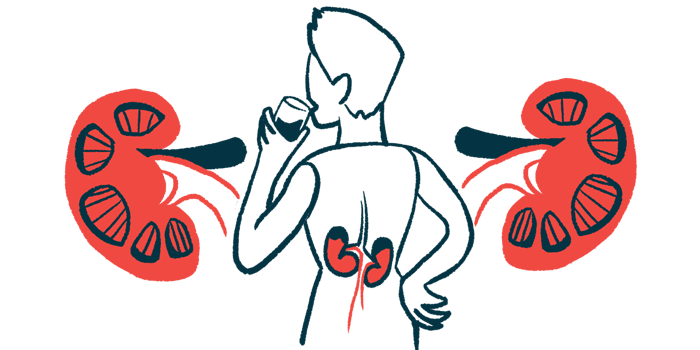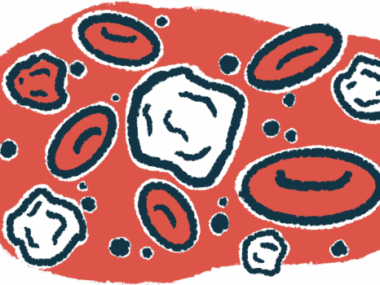Kidney proteins could be key to diagnosing, treating AAV: Study
Proteins seen contributing to disease development
Written by |

Four proteins in the kidneys likely contribute to the development of ANCA-associated vasculitis (AAV), and may be used as diagnostic markers and targets of potential therapies, a study found.
The proteins — PDK4, PPARGC1A, FN1, and PSMB10 — are “novel biomarkers that may refine our understanding and management of AAV,” the researchers wrote.
The study, “Investigating potential biomarkers associated with antineutrophil cytoplasmic antibody (ANCA)-associated vasculitis using Mendelian randomization and transcriptomic analysis,” was published in Arthritis Research & Therapy.
AAV is a group of autoimmune diseases marked by inflammation and damage to small blood vessels throughout the body. AAV symptoms can vary, depending on the affected areas. Lung and kidney damage are common.
In most cases, AAV is caused by self-reactive antibodies called ANCAs. However, not everyone with AAV has high levels of ANCAs in the blood. This variability “presents a challenge in early diagnosis and treatment, emphasizing the need for novel biomarkers that can aid in the timely identification of the disease,” which can improve outcomes, the researchers wrote.
Identifying biomarkers
Protein biomarkers that play a role in AAV development could also represent new targets for potential treatments.
The team of researchers in China used various methods to identify these biomarkers. They focused on proteins in the kidneys, although the biomarkers might have broader applicability.
“By exploring potential biomarkers and their causal [cause-and-effect] relationships with AAV, the study seeks to provide valuable insights into the [development] of the disease and pave the way for precise diagnosis and the development of targeted therapies,” the researchers wrote.
The researchers used datasets of gene activity in kidney tissues to identify 380 genes with significantly different activity levels in people with AAV and healthy controls. Of these, 220 genes showed higher activity — generally indicating increased production of the respective proteins — in the AAV group, while 160 genes were less active.
The researchers assessed the cause-and-effect relationship between these 380 genes and AAV using a method called Mendelian randomization, a method that can determine whether certain gene variants are more often detected in people with a given disease, suggesting a causal link.
The team discovered that 10 genes might be causally linked to AAV. Four of these — PDK4, PPARGC1A, FN1, and PSMB10 — showed potential as biomarkers: two with increased activity in AAV participants and two with decreased activity.
The activity of each of these genes could be used to discriminate between people with AAV and healthy controls with an accuracy of more than 70%. Combining these four genes raised the discriminative potential to 100%.
To confirm the findings, the researchers looked for levels of the proteins produced by these genes in kidney samples from people with AAV and healthy kidney tissue from people with kidney tumors.
Consistent with the gene activity data, the PSMB10 and FN1 proteins were found at significantly higher levels in the AAV group, while the PDK4 and PPARGC1A proteins were found at significantly lower levels.
PSMB10 plays a key role in immune reactions, and its high levels in the kidneys of people with AAV may indicate autoimmune disease processes.
FN1 is involved in biological processes including wound healing and tissue remodeling. The researchers hypothesized that the kidneys produce more FN1 levels early in AAV to protect against tissue injury, but as the disease advances and FN1 levels become too high, the protein may contribute to damage and scarring.
A similar process may occur with PDK4, which is involved in blood vessel inflammation and in suppressing the function of neutrophils, a type of immune cell that contributes to AAV. Early on, lower PDK4 levels could help compensate for immune attacks, but sustained suppression could “potentially [act] as a [pro-scarring] factor in the chronic phase,” the researchers wrote.
PPARGC1A plays a role in energy metabolism and helps cells resist stress. Lower levels of this protein in AAV may make the kidneys more vulnerable to stressors and resulting damage.
The team also identified several existing medications with the potential to treat AAV by targeting any of these biomarkers. Dacarbazine, an approved chemotherapy, was found to bind to FN1, while sodium dichloroacetate, an investigational treatment for a number of diseases, was found to target PDK4. Bortezomib (a cancer medication sold as Velcade and generics) was found to target PSMB10.
All three therapies are known to suppress certain cells or processes involved in AAV, suggesting potential beneficial effects in this patient population.
The researchers noted that their study had limitations, including a small number of participants used to validate the findings and a focus on biomarkers in kidney tissue samples. Future research could explore whether these proteins show biomarker potential in blood samples, which would be a less invasive way to identify potential AAV cases.
“While substantial validation remains necessary, this work could inform future development of integrated strategies that might enhance diagnostic precision and therapeutic targeting in AAV management,” the team concluded.






